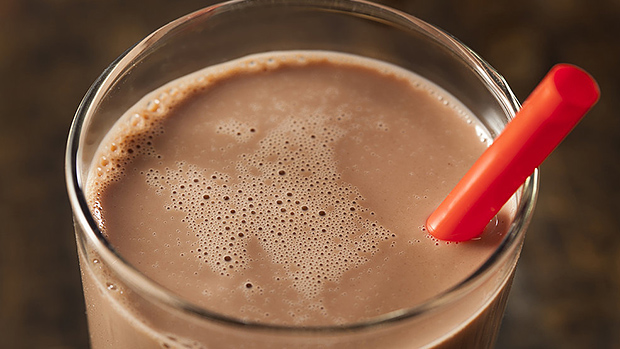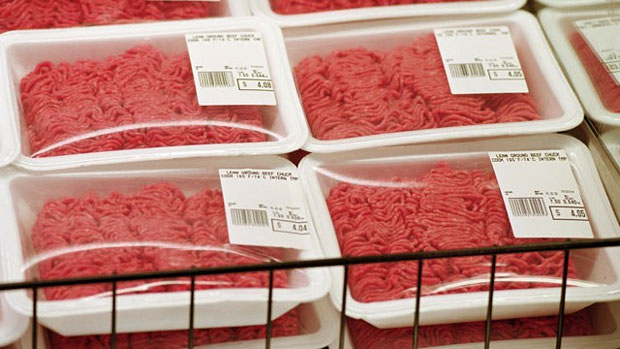I recently received a very interesting voice mail from Adam, one of my current group of "lab wabbits." He said he'd lost over 20 pounds of body fat between November and July, dropping from 17% to 12% bodyfat while adding over 4 pounds of lean mass.
Skeptics among you are likely thinking, "Yeah, big deal. It's called the newbie effect." Well, keep in mind that Adam has been training hard for over 10 years and is a world record holder in grip events, so he's about the furthest thing from a gym green horn as you're going to find.
Now add to the equation that Adam was reportedly consuming plenty of "evil" carbs, red meat, and beer as he achieved these results – and that his results were about average in the group of test wabbits.
Now have I got your attention?
Metabolic Flexibility: What the Heck Is It?
Metabolic flexibility is the ability to switch from one fuel source to the next. Due to possible discontinuities in both the supply and demand for energy, humans need a clear capacity to use lipid and carbohydrate fuels and transition between them.(1) This capacity is a healthy state called metabolic flexibility.
Our options for fuel supply are:
- Protein
- Stored carbohydrates (aka glycogen)
- Fat (Now you're talking, let's torch that crap.)
Theoretically, we could add in the intermediates like lactate but for the sake of simplicity we'll stick with the top 3.
Just so you can sleep at night, the use of protein as a fuel source is very limited unless in extreme conditions involving no exercise and very low amounts of dietary protein. As a result, we're down to two main fuel sources, fats (lipids) and carbohydrates.
Fuel source: Fat ←→ Carbs
Metabolic flexibility is the ability to switch from one fuel source to the next; from fats to carbs and carbs to fat. Metabolic inflexibility is just the opposite; the inability (or limited ability) to switch from one fuel source to the other. For a physique minded individual, this is a real pickle as it's awful hard to drop body fat if you can't burn it!
It's hypothesized that metabolic inflexibility may also play a role in various disease processes such as metabolic syndrome.(2,3,4,5) So along with better body composition, being metabolically flexible may even be healthy. Win-win!
Insulin: The Fuel Selector
A key to understanding metabolic flexibility is the vital role the storage hormone insulin plays. In a healthy state with normal insulin metabolism, humans can effectively switch from a primarily fat metabolism to a carbohydrate metabolism, and vice versa.
The great news for our "large and in charge" muscular friends is that skeletal muscle is a major player in energy balance due to its metabolic activity, storage capacity for both glycogen and lipids, and effects on insulin sensitivity.(7-9) Having more muscle allows your body to have a larger "drain" for both fats and carbs, since muscle is very metabolically demanding.
Victory Conditions
To further wrap our heads around this concept, we need to understand two primary conditions: fed and fasting.
During fasting conditions, someone who's very metabolically flexible will be able to tap into stored body fat. The cool thing is that individuals who are metabolically inflexible can also do this, so fasting becomes a way to increase metabolic flexibility.
During fed conditions, insulin levels will be much higher due to incoming energy (food). While a whole primer on insulin is beyond the scope of this article, the following (highly simplified) points are critical:
- All foods result in the release of insulin.
- Insulin is the fuel selector switch.
- When levels of insulin are low, the body is in fat burning mode.
- When insulin is high, the body is shifted towards carbohydrate metabolism (and fat storing mode).
Kelley et al. presented data from subjects with type 2 diabetes showing them to be as metabolically inflexible as obese subjects, and they derived relatively less energy from lipid oxidation (fat burning) during resting conditions.(10) Our lean friends showed a greater suppression of lipid oxidation during insulin-stimulated conditions (increased insulin shifted them from fat metabolism to carb metabolism, a good thing).
Assessment of Metabolic Inflexibility
One way to assess metabolic flexibility is by the infusion of drugs (insulin, glucose, etc.) to alter the metabolic environment. The downside to this is it's difficult to perform even in a clinical setting, requires more specialized training, and is highly invasive. Considering that injecting insulin can have huge side effects like, uh, death and it becomes clear that a more practical method is required.
1 – High Insulin
Taking in a whey protein drink with some simple carbs on a relatively empty stomach is an effective way to jack insulin levels up. I recommend people try this as their breakfast a few times during the week and monitor their reaction.
- If you feel like collapsing face-down in your drink and spilling it all over the table, you probably have an issue with high levels of insulin and the resulting crash from it.
- If you feel great, no worries.
2 – Low Insulin
For this test, I recommend you do some fasting. Not the old school maple syrup, lemon juice, and cayenne pepper fasting, just no consumption of any calorie-containing foods.
Despite what you might've read in the weird wild web, any intake of food will result in the release of insulin, and the amount released is dependent on many things. Add to the mix the fact that everyone will respond differently and it's a doozy of a mess to sort out. The actual insulin data from subjects is all across the map.
In a fasting condition, there's no food coming in to stimulate any increase insulin. If you find that you can't make it more than two hours, you're probably inflexible to burning body fat. Not a good state to be in, my large friend. If you can easily go for 5-6 hours, that's much better.
I have advanced clients hit a 24-hour fast since there's data showing insulin levels reach their lowest point at around the 24 hour mark. Don't worry about the dastardly effects of catabolism; the amount of catabolic breakdown of muscle proteins is insignificant during a fast and isn't worth worrying about and releasing more cortisol.
If you're really concerned, just include one strength training session since the NET result of a strength session is an anabolic response.

Practical Application
- If you're very metabolically flexible, eating some "bad" foods from time to time (or often as in this case) shouldn't be an issue, as your body can convert them into fuel without many side effects.
- Try simulating the conditions for high and low levels of insulin and note your response. If you feel like a puddle after a protein and carb drink, you're more intolerant to high levels of insulin. This means it's time to add in some more low intensity cardio exercise or even a fast as fasting has been shown to improve insulin sensitivity.
- If you can't make it more than two hours without some food, you're impairing your body's ability to burn that spare tire, so work to slowly increase your spacing between meals. I like to have clients do about one 24 hour fast per week if their goal is to drop fat and increase their metabolic flexibility.
Much of this throws what we think we know on its head, but I encourage you to experiment. You just might be pleasantly surprised!
References
- Kelley D. E., J. He, E. V. Menshikova, V. B. Ritov. Dysfunction of mitochondria in human skeletal muscle in type 2 diabetes. Diabetes. 51(10):2944-2950, 2002.
- Arslanian S., C. Suprasongsin. Insulin sensitivity, lipids, and body composition in childhood: is "syndrome X" present? J Clin Endocrinol Metab. 81(3):1058-1062, 1996.
- Nistala R., C. S. Stump. Skeletal muscle insulin resistance is fundamental to the cardiometabolic syndrome. J Cardiometab Syndr. 1(1):47-52, 2006.
- Oakes N. D., P. Thalen, E. Aasum, et al. Cardiac metabolism in mice: tracer method developments and in vivo application revealing profound metabolic inflexibility in diabetes. Am J Physiol Endocrinol Metab. 290(5):E870-81, 2006
- Stump C. S., E. J. Henriksen, Y. Wei, J. R. Sowers. The metabolic syndrome: role of skeletal muscle metabolism. Ann Med. 38(6):389-402, 2006.
- Henquin J. C., M. Nenquin, P. Stiernet, B. Ahren. In vivo and in vitro glucose-induced biphasic insulin secretion in the mouse: pattern and role of cytoplasmic Ca2+ and amplification signals in beta-cells. Diabetes. 55(2):441-451, 2006.
- Goodpaster B. H., J. He, S. Watkins, D. E. Kelley. Skeletal muscle lipid content and insulin resistance: evidence for a paradox in endurance-trained athletes. J Clin Endocrinol Metab. 86(12):5755-5761, 2001.
- Goodpaster B. H., D. E. Kelley. Skeletal muscle triglyceride: marker or mediator of obesity-induced insulin resistance in type 2 diabetes mellitus? Curr Diab Rep. 2(3):216-222, 2002.
- Goodpaster B. H., S. Krishnaswami, H. Resnick, et al. Association between regional adipose tissue distribution and both type 2 diabetes and impaired glucose tolerance in elderly men and women. Diabetes Care. 26(2):372-379, 2003.
- Kelley D. E., B. H. Goodpaster. Skeletal muscle triglyceride. An aspect of regional adiposity and insulin resistance. Diabetes Care. 24(5):933-941, 2001.





